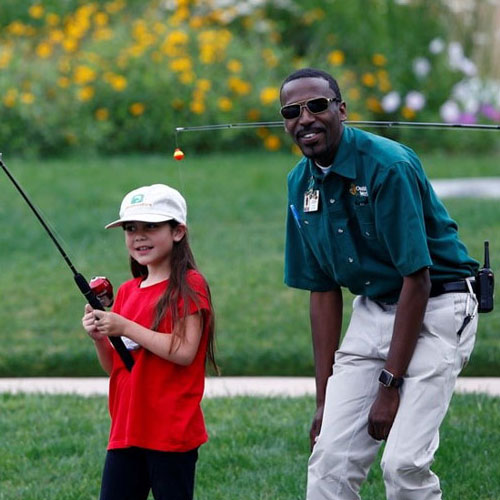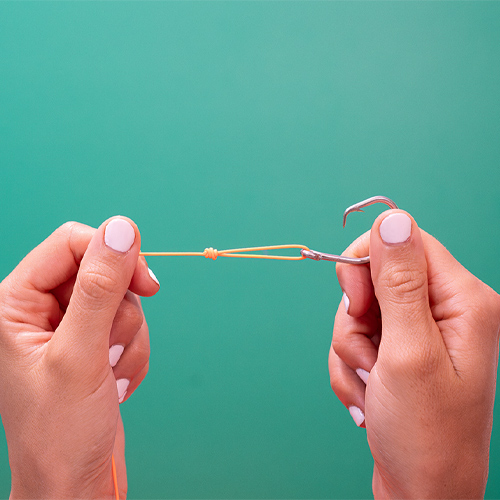Saltwater Fishing Sinkers
Whether saltwater trolling, drifting or fishing at anchor, saltwater sinkers of different sizes and shapes will put the bait at different depths in the water.
Saltwater Sinkers
The general rule of thumb is to use the lightest sinker that will keep the bait in the feeding zone. Saltwater fishing sinkers are just as specialized as hooks and rigs. Most saltwater sinkers are made of lead, but some anglers are experimenting with biodegradable sinkers made with pressurized iron oxide, and even clear models made from silica crystal. Regardless of size, shape or content, using the right sinker will put your bait in the feeding zone.
1. Bank Sinkers
 Bank sinkers are usually used to put a bait close to the bottom. Most are either round or bell-shaped to avoid getting snagged in the structure. Some of these saltwater fishing sinkers connect to the line with a swivel to reduce line twist. Others feature sharp edges and points to stick in soft sand or have wires that stick out and hold like an anchor. Bank sinkers can either be tied to the end of the rig or attached to a fishfinder slide above the hook.
Bank sinkers are usually used to put a bait close to the bottom. Most are either round or bell-shaped to avoid getting snagged in the structure. Some of these saltwater fishing sinkers connect to the line with a swivel to reduce line twist. Others feature sharp edges and points to stick in soft sand or have wires that stick out and hold like an anchor. Bank sinkers can either be tied to the end of the rig or attached to a fishfinder slide above the hook.
2. Egg Sinkers
 Fish will avoid a bait if they detect anything suspicious. Use an egg sinker to keep the fish from detecting the weight of the sinker when it picks up the bait. An egg sinker is shaped like an egg and has a hole running through it. Pass the line through the sinker and tie on the rig. When the fish picks up the bait, the line passes through the sinker and the fish doesn’t feel the weight. These saltwater sinkers work best with live or cut bait because you can let the fish eat the bait before setting the hook.
Fish will avoid a bait if they detect anything suspicious. Use an egg sinker to keep the fish from detecting the weight of the sinker when it picks up the bait. An egg sinker is shaped like an egg and has a hole running through it. Pass the line through the sinker and tie on the rig. When the fish picks up the bait, the line passes through the sinker and the fish doesn’t feel the weight. These saltwater sinkers work best with live or cut bait because you can let the fish eat the bait before setting the hook.
3. Trolling Sinkers
 Use a trolling sinker to troll baits at different depths. Trolling sinkers are long and slender and pass through the water easily. The best models have swivels at either end to keep the sinker from twisting the line. How much lead you use depends on how fast you are trolling and the size of your bait. Use a long leader to keep the sinker as far as possible from the bait. To get a bait even deeper, use a planer, which features a metal wing that pulls the line deep in the water. When a fish hits the bait, it trips the wing and the angler can fight the fish. Another way to troll a bait deep is to use a downrigger. A downrigger consists of a short boom and winch attached with cable to a heavy lead ball. The fishing line is clipped to the ball and dropped to the desired depth with the boom and winch. Regardless of how you troll, use high-quality bearing swivels at all connections to avoid line twists.
Use a trolling sinker to troll baits at different depths. Trolling sinkers are long and slender and pass through the water easily. The best models have swivels at either end to keep the sinker from twisting the line. How much lead you use depends on how fast you are trolling and the size of your bait. Use a long leader to keep the sinker as far as possible from the bait. To get a bait even deeper, use a planer, which features a metal wing that pulls the line deep in the water. When a fish hits the bait, it trips the wing and the angler can fight the fish. Another way to troll a bait deep is to use a downrigger. A downrigger consists of a short boom and winch attached with cable to a heavy lead ball. The fishing line is clipped to the ball and dropped to the desired depth with the boom and winch. Regardless of how you troll, use high-quality bearing swivels at all connections to avoid line twists.
4. Split-Shot Sinkers
 You can pinch one of these small balls of lead on the leader above the hook to carry the bait a few feet under the surface. Split-shot sinkers work best with small baits, light line or low current.
You can pinch one of these small balls of lead on the leader above the hook to carry the bait a few feet under the surface. Split-shot sinkers work best with small baits, light line or low current.
5. Special Sinkers
Many types of fishing require special types of sinkers. Salmon anglers in California, for example, use breakaway sinkers that drop from their line when a fish hits the bait. Fishermen who are slow-trolling live baits use big jig heads, while those fishing over rocky terrain may use slender sinkers. Whatever type of saltwater fishing you do, there is a saltwater fishing sinker that will keep your bait in the feeding zone.
KEEP LEARNING

TakeMeFishing x Teen Vogue
Join us on a creative journey as fashion designer Ahmrii Johnson walks us through her collaborative vision and process with Teen Vogue and fashion brand, Rentrayage, to create a special piece.
LEARN MORE

First Catch Center Trailer Gallery
FCC Trailer Photo Gallery
LEARN MORE

How to Tie a Duncan Knot
Learn to tie a Duncan knot by following these five simple steps. Watch our new video.
LEARN MORE


.png?lang=en-US&ext=.png)